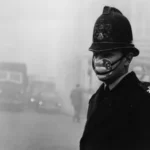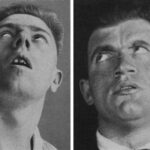
A boy disappears in Louisiana
It began like any other summer outing. In August 1912, Percy and Lessie Dunbar took their four-year-old son, Bobby, on a fishing trip to Swayze Lake near Opelousas, Louisiana. The boy played on the edge of the water while the adults prepared for the day. Then, suddenly, he was gone.
The disappearance set off one of the largest manhunts the region had ever seen. Hundreds of volunteers combed the surrounding swamps, dragged the lake with dynamite charges, and posted notices in nearby towns. Local newspapers reported every development, stoking public anxiety. Was he kidnapped? Did he drown? No trace was found—no clothing, no footprints, no body. Bobby had vanished into thin air.
But what looked like a tragic case of a missing child would soon become something stranger: a courtroom drama, a media circus, and eventually a modern DNA bombshell that would rewrite the past.

A boy found—or borrowed?
Eight months later, a boy matching Bobby’s description was spotted in Columbia, Mississippi. He was traveling with a man named William Cantwell Walters, a piano tuner and handyman. The boy had similar hair and eye color. He had a scar on his left foot and a mole on his neck—just like Bobby. Suspicion fell immediately.
Authorities arrested Walters and brought the boy to Louisiana. He insisted the child was Bruce Anderson, the illegitimate son of a woman named Julia Anderson from North Carolina. According to Walters, Julia had willingly let him take Bruce on the road. He’d cared for the boy like a father.
The Dunbars were summoned. After some hesitation, they declared the boy was theirs. They took him home, gave him Bobby’s old clothes and toys, and held a party to welcome him back. The newspapers rejoiced: BOBBY DUNBAR FOUND ALIVE.
But not everyone was convinced.
Julia Anderson enters the fight
Days later, Julia Anderson arrived in Louisiana, exhausted after borrowing money to make the trip. She was adamant: the boy was her son, Bruce. She described how Walters had helped her raise the boy and how she had agreed to let them travel together temporarily. She hadn’t expected to be accused of abandonment, or worse—of lying.
When she was first brought to see the child, reporters noted that she didn’t immediately claim him. She asked to see him the next day in private, without pressure. When she did, she was certain: he was Bruce.
But the damage had been done. Julia was poor, unmarried, and unfamiliar with the legal system. In contrast, the Dunbars were respected and affluent. Public opinion quickly turned against her.
Newspapers portrayed Julia as morally questionable and unfit to care for a child. One article described her as “untrustworthy.” Her hesitation during the initial meeting was seized upon as proof. The narrative was set. The Dunbars had found their boy, and she was trying to take him away.

The trial of William Walters
In 1914, William Cantwell Walters stood trial for kidnapping. Julia Anderson testified, but her credibility was undermined at every turn. She didn’t have formal custody papers for Bruce. She admitted she had given him to Walters for a time. And her character—especially as a single mother—was publicly shredded.
The court sided with the Dunbars.
Walters was convicted of kidnapping and sentenced to two years in prison. Though he would eventually appeal and be released, the verdict stood in the public eye: the boy was Bobby Dunbar.
The case closed. The boy stayed with the Dunbars. Julia went home without him.
But even then, the story didn’t sit right
There were small, odd inconsistencies in the case that refused to disappear.
For one, early newspaper accounts quoted Percy and Lessie Dunbar as being unsure whether the boy was Bobby. They reportedly weren’t convinced at first glance—and neither were their relatives. But within days, they changed their minds. Some speculated that the boy eventually began to resemble their missing son more, or that familiarity grew from exposure. Others weren’t so sure.
And what of the child’s own behavior? The boy allegedly didn’t recognize the Dunbars, nor respond to the name “Bobby” right away. He clung to Walters, called him “Daddy.” Some reports suggest he protested when taken from him.
Julia Anderson, meanwhile, returned home heartbroken. She continued to insist that the boy was her son, Bruce. She later married, had more children, and died still believing she’d been robbed by the courts and the press.
A mystery cemented by time
The child raised as Bobby Dunbar went on to live a full life. He married, had children, and worked as a salesman. In Opelousas, he was Bobby to everyone who knew him. The case was largely forgotten by the public, becoming a local legend and a family legacy.
That might’ve been the end—until his granddaughter began asking questions.
A Granddaughter’s Doubt
Nearly a century after Bobby Dunbar’s disappearance, the case was all but settled in public memory. But for Margaret Dunbar Cutright, the legend didn’t feel like the whole truth.
Margaret, the granddaughter of the man raised as Bobby Dunbar, began digging into her family’s past in the early 2000s. What started as a genealogical curiosity quickly evolved into something more personal—and unsettling.
She read hundreds of archived newspaper clippings. She found inconsistencies in eyewitness accounts, notes on courtroom testimony that raised eyebrows, and private letters that suggested even the Dunbars had doubts at the time. Her grandfather, she discovered, had confided to relatives that he sometimes wondered if he was really Bobby.
Margaret’s research uncovered something else: Julia Anderson’s children had passed down their own version of the story. In their telling, Bruce Anderson had been taken from his mother by force, and his real identity had been erased by a powerful family and a hungry press.
By 2004, Margaret had a question no one had dared to ask for decades: What if Bobby Dunbar never came home?
The DNA test that cracked the case
The only way to know for sure was through DNA. Margaret convinced her father, Bobby Dunbar Jr., to take a test and compare his DNA to that of Alonzo Dunbar, Bobby’s younger brother.
The results were conclusive: there was no genetic match. The boy raised as Bobby Dunbar was not the biological child of Percy and Lessie Dunbar.
After 92 years, the truth emerged—Bobby Dunbar had not been found in 1913. Instead, the Dunbars had raised Bruce Anderson, the son of Julia Anderson, as their own.
Rewriting history, too late
The revelation rippled through both families.
For the Andersons, it was a painful vindication. They had always believed Julia had been telling the truth. For generations, they’d watched her be dismissed and humiliated by the press and legal system. The DNA proved she had not only lost her child, but had also been denied justice.
The Dunbars were left with a complex legacy. The man they had loved and raised as Bobby was not biologically theirs, yet he had been part of their family for decades. He had lived a full life, raised children, and passed on the Dunbar name. To his descendants, the discovery was shocking—but didn’t change who he had been to them.
Still, Margaret Dunbar Cutright called the results “a heartbreak for both families.” She published her findings in a book, A Case for Solomon, co-written with Tal McThenia, to set the record straight.
But some questions could no longer be answered.
What happened to the real Bobby Dunbar?
If the boy found in Mississippi wasn’t Bobby, then what happened to the real one?
The most common theory is that he drowned in Swayze Lake and his body was never recovered. The lake had thick underbrush and muddy waters, and search techniques at the time were crude. Some locals even suspected alligators had dragged the child under. Dynamite was used in hopes of surfacing a body—but nothing ever emerged.
Other theories linger in the shadows. Could he have been kidnapped by someone else and never found? Was there a misidentification from the beginning that no one dared correct?
The tragic irony is that the frenzy to “find” Bobby may have buried the truth entirely. Once the Dunbars accepted the boy as their own, there was no appetite for further inquiry.
A legal system tilted by power
One of the most revealing aspects of the case is how starkly it reflected the social dynamics of early 20th-century America.
Julia Anderson was a working-class woman, unmarried and already marked by scandal. She didn’t have the resources or standing to mount a serious legal challenge. Courts in 1914 weren’t inclined to listen to a poor single mother over an established, middle-class family.
In the public eye, Julia’s poverty became synonymous with irresponsibility. The Dunbars, by contrast, fit the image of “deserving” parents. That contrast shaped every headline and courtroom decision.
The trial wasn’t just about who the boy really was. It became a trial of character, and in that theater, Julia Anderson never had a chance.
Media’s role in manufacturing a truth
The newspapers of the era played a massive role in swaying public perception. Sensational headlines, moral judgments, and gendered language painted Julia as unstable, immoral, and confused—even when she calmly and consistently stated her claim.
Her hesitation upon seeing the boy—understandable given the circumstances—was portrayed as guilt. Her poverty was depicted as proof of unfitness. The press preferred the neat, heroic arc of a family reunited over the messy reality of custody disputes and courtroom doubt.
The media didn’t report the story—they helped write it.
Memory, identity, and the inheritance of lies
There’s a deeper philosophical question at the heart of the Bobby Dunbar case: If the boy believed he was Bobby, if he lived as Bobby, does that make him Bobby in some essential way?
It’s a question historians, psychologists, and ethicists still debate. Can someone be made into someone else, through repetition, through community, through need?
The boy who became Bobby Dunbar never publicly questioned his identity. If he harbored doubts, he didn’t share them widely. He loved the family that raised him, and they loved him in return. Is that enough?
But for Julia Anderson, and for the real Bobby Dunbar—wherever he went—identity wasn’t so fluid. One mother lost her child in the woods. Another lost hers in a courtroom. And a little boy, Bruce Anderson, lost his name.
Legacy and lessons
The Bobby Dunbar case is now taught in law schools and journalism programs as a cautionary tale. It warns of how easily power, prejudice, and media can distort truth.
But it’s also a story about the limits of truth. Even after a century, some wounds can’t be healed by science. DNA offered clarity—but not closure.
And in that way, it’s not just a mystery solved. It’s a story about what happens when the need for certainty outweighs the need for truth.





